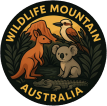What’s making that noise in the ceiling ?
Recognising Noises in the Ceiling: A Guide to Australian Wildlife Visitors
Living in Australia, ceiling noises can be an early clue about the secret lives of both native and introduced animals sharing our spaces. Each visitor leaves subtle signs—sounds, smells, and habits—that help tell their story. Let’s delve into how you can identify these rooftop guests, and what you can do to respond compassionately and effectively.
Listening Closely: When and What Are You Hearing?
Feral Rats and Mice
- Activity: All hours, especially noisy at night—scurrying, fighting, scrambling.
- Smell: Strong, unmistakable ‘mouse smell’—a sharp, musky odour.
- Clue: Their noise level is surprising for their size, echoing through the quiet night.
Native Rats and Mice
- Activity: Strictly nocturnal; leave the ceiling at dusk to forage, return at dawn.
- Smell: No noticeable odour—nature’s clean tenants.
- Clue: Unlike feral rodents, they’re quiet and mostly absent during daylight.
Possums
- Activity: Only at dusk (leaving) and dawn (returning); not active inside during the night.
- Sound: Thudding footsteps, scrapes—larger and slower than rodents.
- Tale: Explains the loss of habitat, as new houses replace old trees, driving possums to seek comfortable roof spaces.
Pythons
- Activity: Very quiet; only occasionally heard changing position during rest.
- Role: Natural rodent control—no harm to the home, but secure your pets in python-proof enclosures.
Sensing Through the Ceiling: More Than Just Noise
- Odour clues: If your nose tingles from a musky scent, it points to feral rather than native rodents.
- Tactile sensations: A strange vibration, almost like a distant rolling thump, can mean a larger animal, such as a possum, has claimed your ceiling.
- Visual signs: Nests, droppings, or chewed materials indicate rodents. Possums leave little visual trace, but may deposit larger droppings.
The Possum Story: Why Is It There?
Imagine a possum, curled in its favourite tree, suddenly displaced as the tree is felled. Territory rules make it a wanderer with nowhere to go—your ceiling becomes the reluctant substitute. Even a single tree loss in an established suburb can set these ripples in motion.
Helping Possums Find a Home
- Install a possum box: Mimics natural tree hollows, safe and shaded.
- Location matters: Place in a nearby tree, not exposed to direct sun.
- Do not relocate: Relocating possums seldom ends well—they are territorial and rarely survive outside their home range.
Ethically Discouraging Unwanted Guests
- Identify entry points: Watch how and when the animal enters or leaves.
- Install a one-way flap: For example, a simple strip of shade cloth, taped at the top, allows exit but prevents re-entry.
- Wait for all animals to leave: Especially important if young may be present.
- Permanently seal gaps: Use aviary wire (1cm square mesh) to close off entry points.
- Older homes: In buildings with many access points, co-existence may be the only option.
Conservation Message: Sharing Our Space
Every animal in your ceiling is driven by a story—whether loss of habitat or the lure of easy shelter. By understanding their needs and responding thoughtfully, you are contributing to the preservation of Australia’s unique wildlife heritage.
- A possum in the roof is a reminder of the wild world just outside.
- Native animals are rarely destructive, seeking only a safe refuge.
Visitor Active Time Noise Level Smell Threat to Home? Feral Rodent All times, loudest at night High (scratching, running) Strong May chew wires, cause mess Native Rodent Dusk-dawn Low (quiet) None Rarely causes damage Possum Dusk and dawn Heavy thuds, shuffling None No wire damage Python Rare, repositioning Minimal None No direct threat
Final Thoughts
Caring for Australian wildlife begins at home. By recognising the patterns in your ceiling’s nightly soundtrack and responding with empathy and knowledge, you form a vital link in the conservation chain—protecting not only your own living space, but the wider natural world we all share.
If you need to act, always prioritise non-lethal, habitat-friendly solutions, and where possible, consult local wildlife experts to ensure the best outcome for both people and our wild neighbours.
